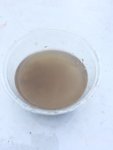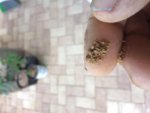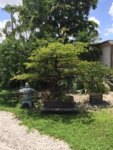Akadama is expensive in the US because of the cost of shipping. There is akadama in Oregon, just no one has bothered to mine it. It also exists in Australia.
It is great to use in bonsai pots. Because it DOES break down over time. When it does, it’s time to repot. When fresh, it encourages fast root growth. Roots grow to seek water. Roots that are kept too wet have no need to grow.
Trees generally repotted in the spring. When they start growing in fresh akadama, there’s lots of air (oxygen) and enough water, so they grow rapidly. Later, when the foliage is grown out, the tree needs more water to support that foliage. Akadama that breaks down retains more water. So the soil changes to be more water retentive, right at the time when the tree needs more water!
It’s not magic, but darn close.
Trees in bonsai pots need periodic repotting. The need to have the old roots removed to make room for new roots to grow. Just as the foliage needs to be cut back every so often.
This cycle of let grow and cut back, IS bonsai! Using akadama makes it easier by having a soil that changes it’s characteristics over time.
All that said...
No you absolutely have to use it? No.
Would I use it in a grow box where I want lots of growth? No. The nature of akadama retaining water increases over time, keeping roots wetter than with other soils. As I said, wet roots don’t grow as much as roots that are less wet. The less wet roots are stimulated to see out water. The grow box will have lots more volume for there to be lush root growth. A bonsai pot is much smaller, so a soil mix that can hold more water for an increasing foliage mass is beneficial.
Would I have to water more often if I use akadama? No, you would have to water less often.






